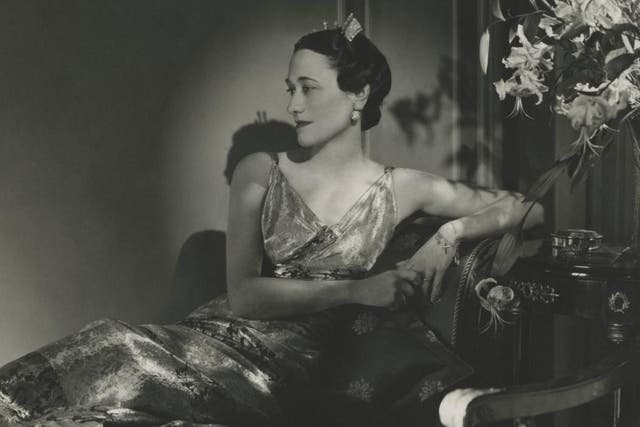

When Prince Harry wed Meghan Markle in 2018, he didn’t just break the mold by marrying an American actress. Markle was also divorced—her two-year-long marriage to producer Trevor Engelson ended in 2013.
Marrying a divorced person was taboo among the British monarchy for hundreds of years. By signing off on the match, Queen Elizabeth, who must be consulted before people within the line of succession marry, reinforced the family’s recent about-face on divorce. But why was it such a divisive issue in the past?
“Historically the Church of England’s position was that divorce was okay, but remarriage was not,” says Arianne Chernock, an associate professor of history at Boston University whose research focuses on gender and the British monarchy.
Ironically, the roots of that position—and the Church of England itself—lie in the inability of Henry VIII to annul his marriage with the blessing of the Catholic Church. In the 1530s, Henry decided he wanted an annulment after Catherine of Aragon failed to give birth to a male heir. When the pope repeatedly refused to grant his request, Henry first limited the Church’s influence in England, then formally severed ties to Catholicism in 1534.
This break from the Roman Catholic Church meant that the British monarch, not the pope, was the official head of the church in Britain. Since then, monarchs have pledged to uphold the religious tenets of the Church of England at their coronations. Within the royal family, it became nearly impossible to divorce or marry someone whose previous marriage had ended.
Like most other Christian religions of the time, the Church of England mirrored societal stigmas against divorce. England’s monarchs reflected the laws of their church, even as divorce laws became more liberal. At first, though it was possible to legally divorce, Parliament had to grant the dissolution of the marriage. As a result, writes legal analyst Henry Kha, only 131 divorces were legally granted in England during the entire 18th century.
Over the years, divorce became more common. Civil divorce became possible starting in 1857, but standards did not change for monarchs. Nor did Church of England doctrine: Until 2002, the church would not recognize the marriage of any divorced person whose ex-spouse was still living. And thanks to the Royal Marriages Act of 1772, the sitting monarch had to approve the marriage of any descendant of George II, and if they didn’t, both houses of Parliament had to do it instead. This law gave monarchs massive control over their families’ love lives, and it came into play when royals tried to marry divorced people.
That didn’t mean that royals didn’t attempt divorce: In 1820, George IV was so determined to divorce his wife, Caroline of Brunswick, that he convened a parliamentary panel to prove that his wife had been unfaithful. The divorce never went through, but its effect on the monarchy was disastrous.
Caroline’s trial in the court of public opinion essentially launched the tabloid’s obsession with royals. “For the first time,” writes historian Carolyn Harris, “the collapse of a royal marriage unfolded in twopenny broadsheets that were accessible to members of all social backgrounds.”
Royal divorce, it seemed, was on the table, but it took until 1936 for the royal family to contend with a monarch who tried to marry a divorced person. When Edward VIII decided to marry Wallis Simpson, a twice-divorced American socialite, he sparked a constitutional crisis. By marrying her against his elected government’s will, Edward would have undermined faith in the British Parliament, so he abdicated instead.
After that, divorce became almost a way of life for the Windsors. In 1953, Princess Margaret flirted with marrying Peter Townsend, a divorced war hero. Ultimately, she abandoned the relationship, possibly because she would have had to give up her ability to succeed to the throne. Soon, Margaret herself was a divorcee, and three of Elizabeth II’s four children divorced, too. In 1992, Princess Anne remarried in Scotland, whose church does not consider marriage a sacrament, and sidestepped the Church of England’s restriction on divorcees remarrying.
Then, in 1996, Prince Charles (now King Charles III), divorced Diana, creating a media firestorm. Though Diana never remarried, Charles did—and his bride, Camilla Parker Bowles, had been divorced, too. Elizabeth okayed the marriage, ushering in a new era of attitudes toward divorce within the royal family.
Now, says Chernock, divorce is “more the norm than the exception,” at least for the current members of the royal family. “It would be somewhat hypocritical at this point [for them] to invoke the old standard,” she says.
Since 2002, the Church of England has allowed the remarriage of divorced persons in certain special circumstances. Regardless of what the Church of England does, says Chernock, expect future monarchs to be more laid back about divorce. “Given the increasingly lax nature of expectations around questions of divorce, the sovereign will be much more sympathetic and flexible in the future,” she says. “I can’t imagine the next generation using that tradition in some kind of personal, cruel way.”